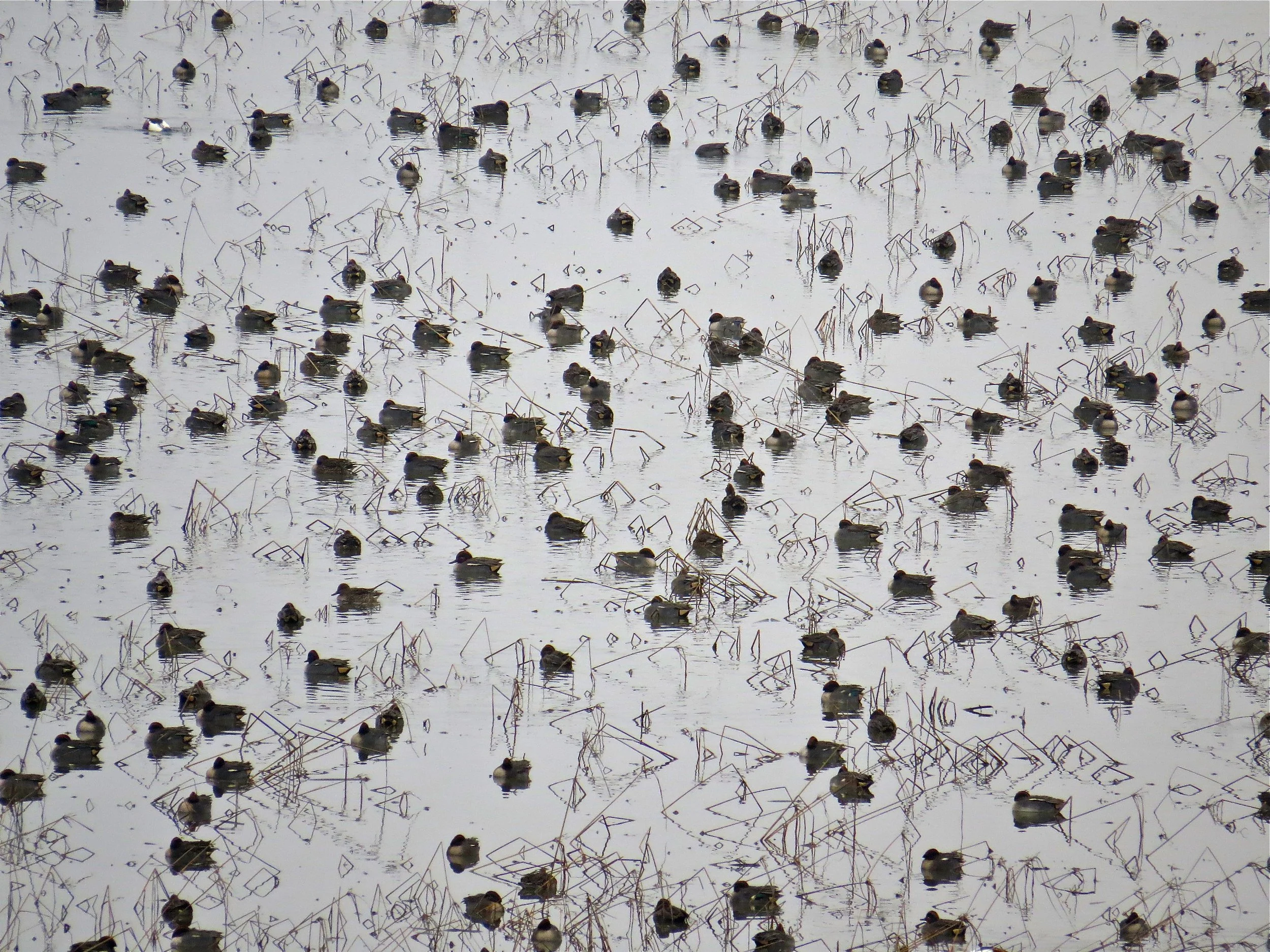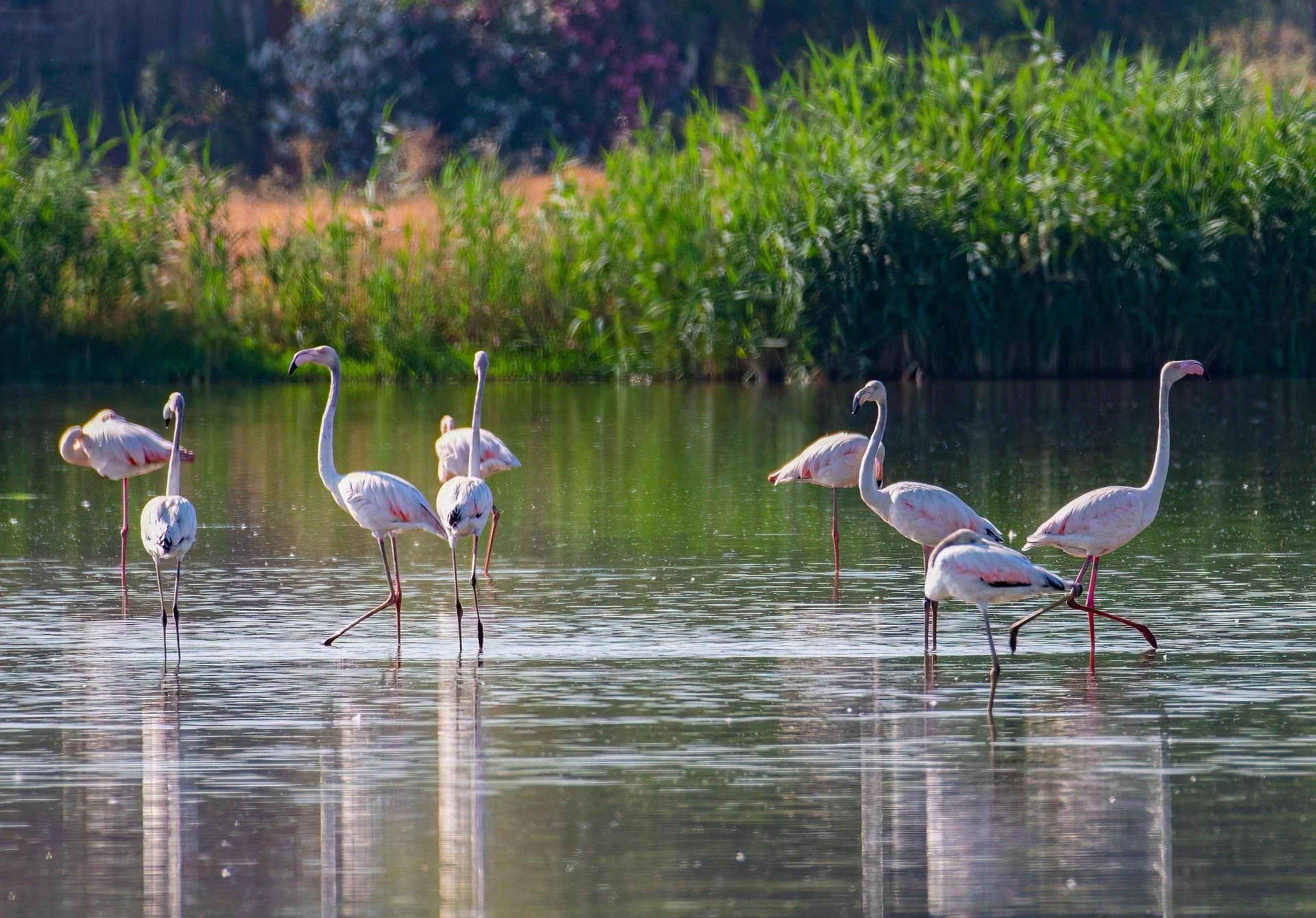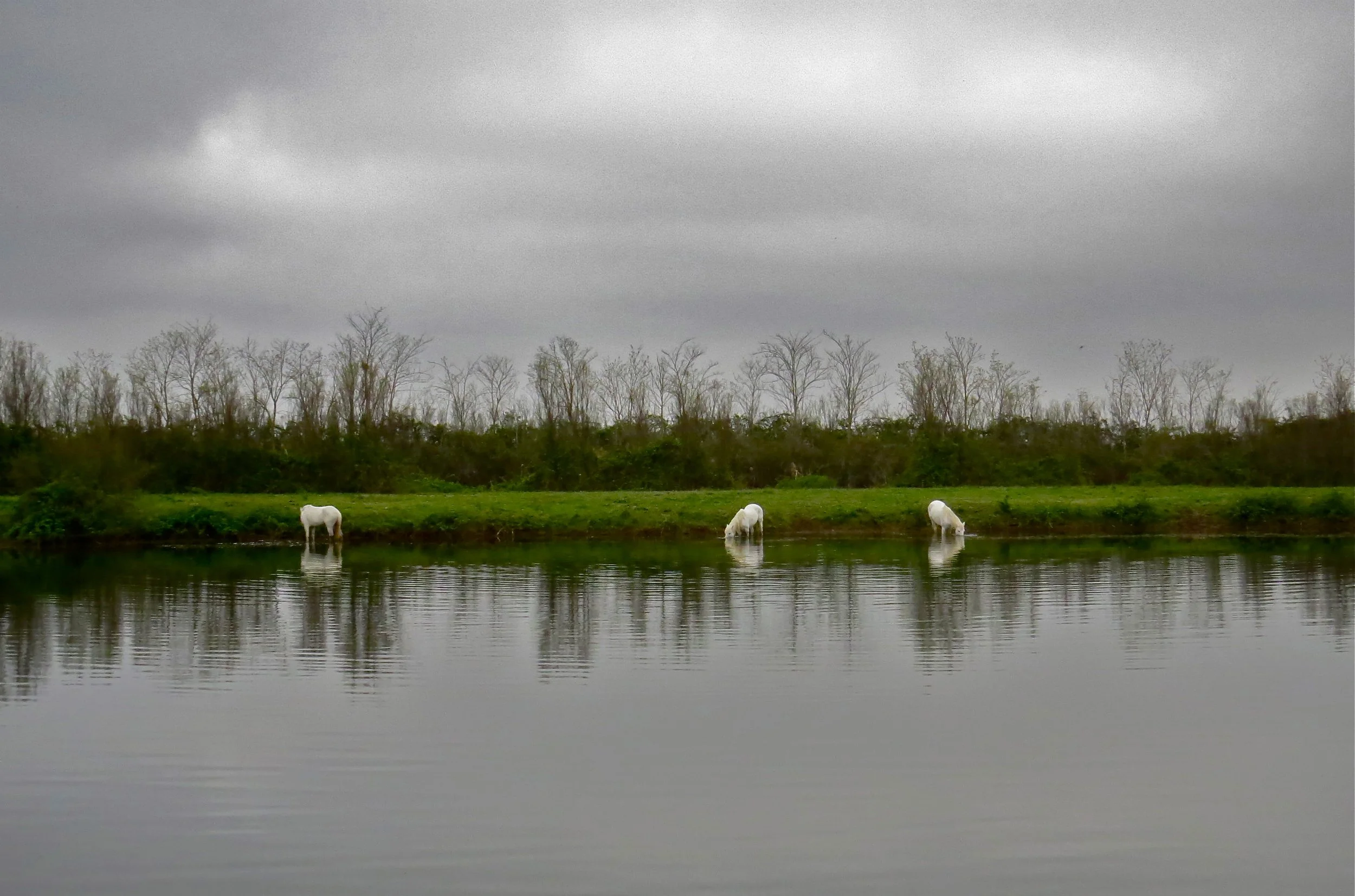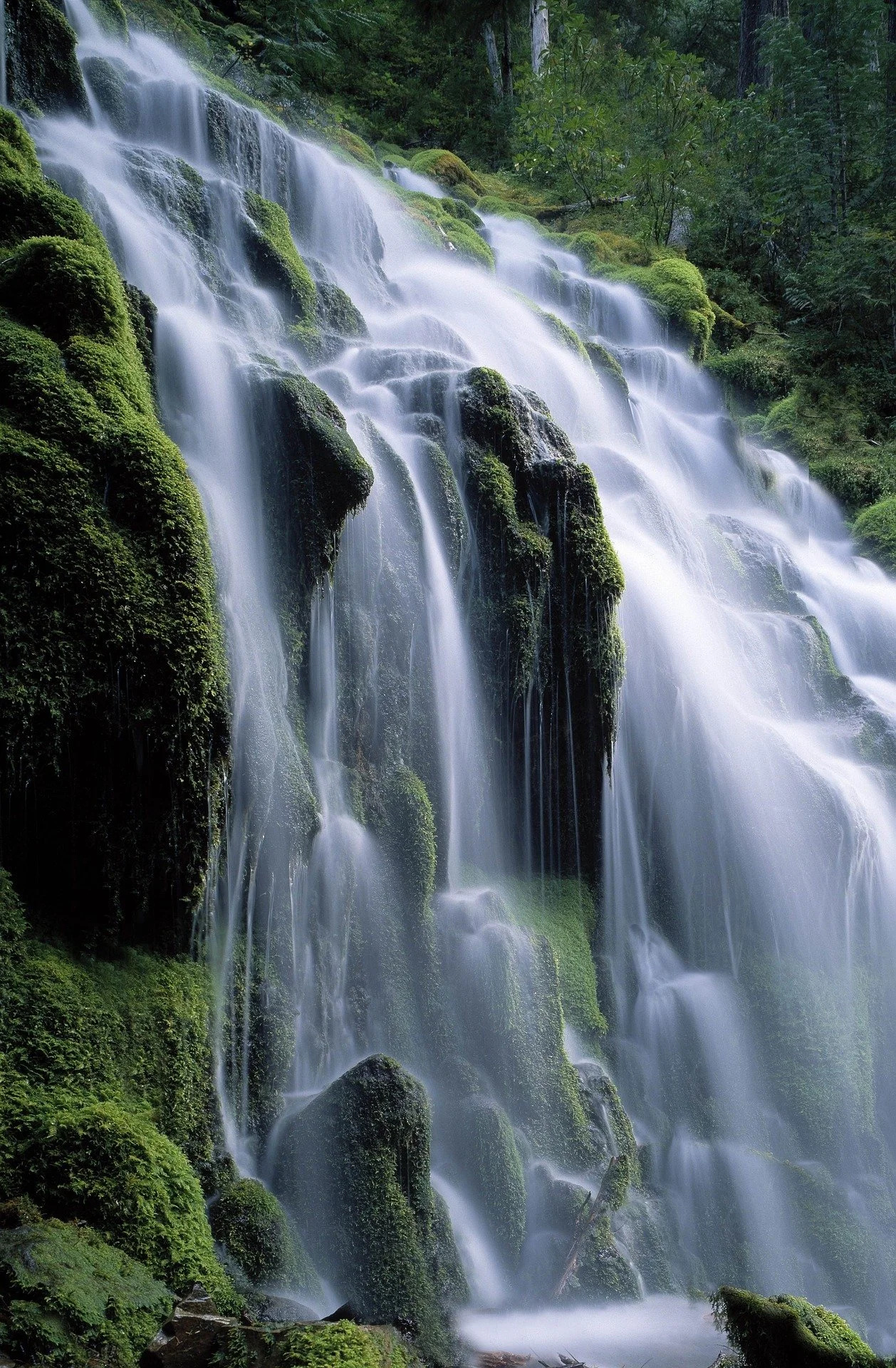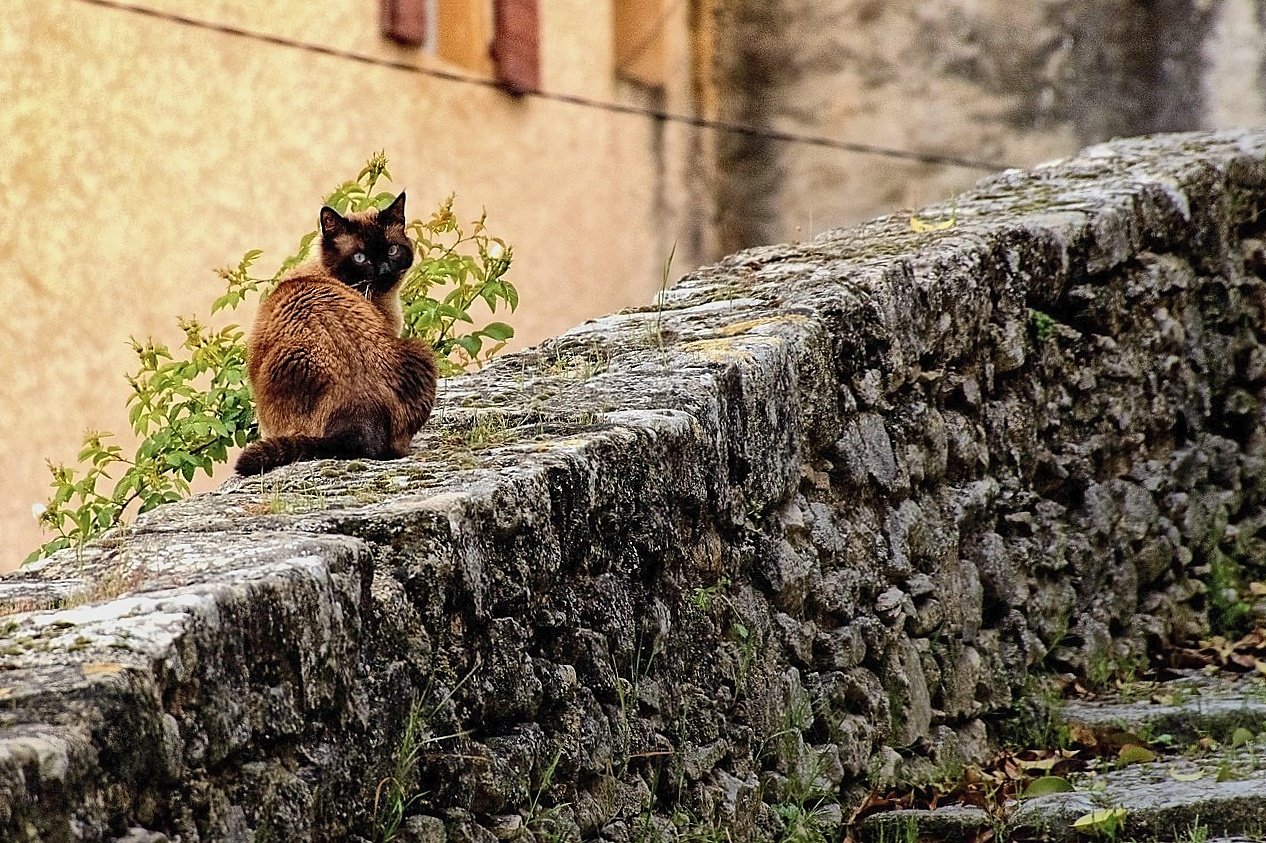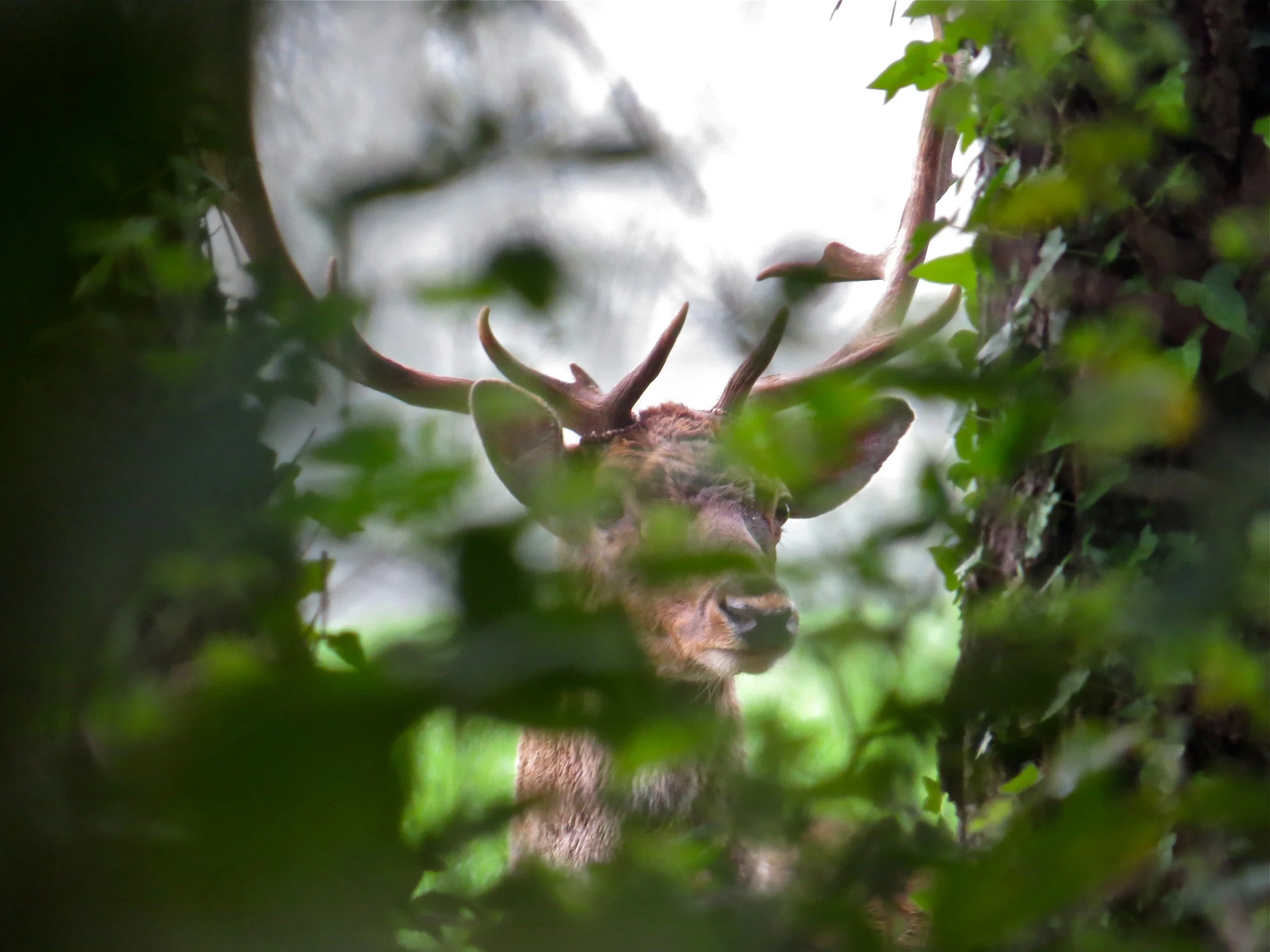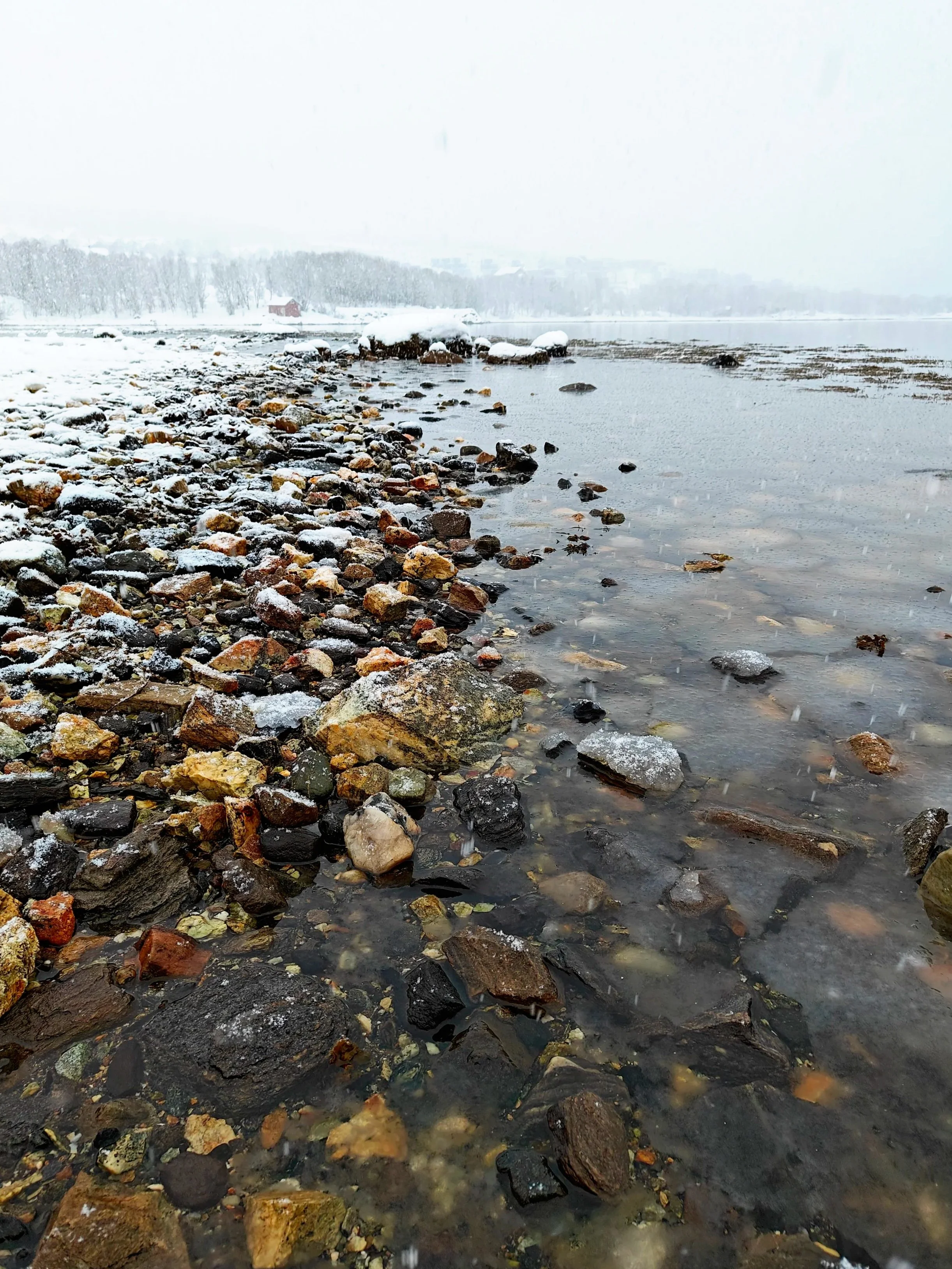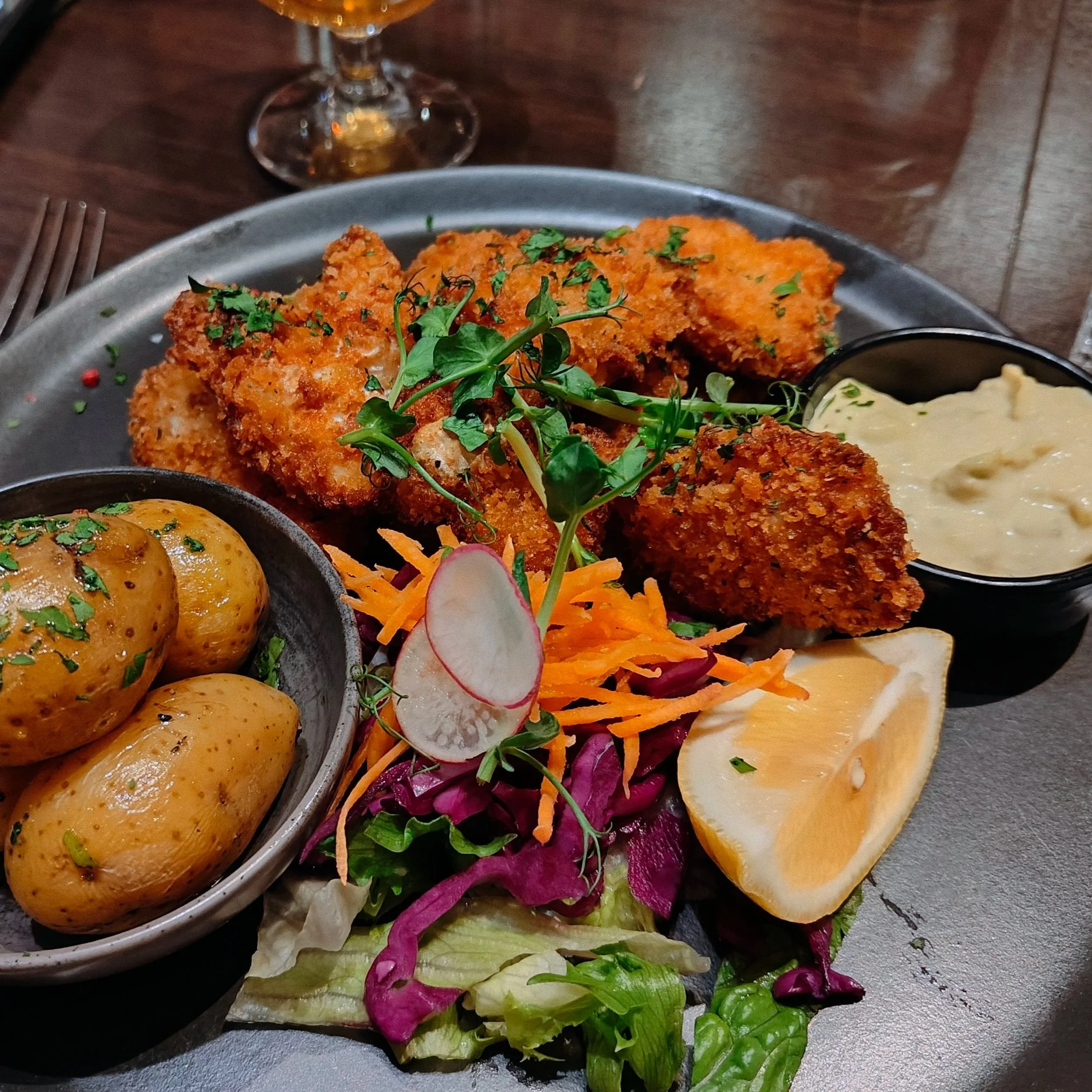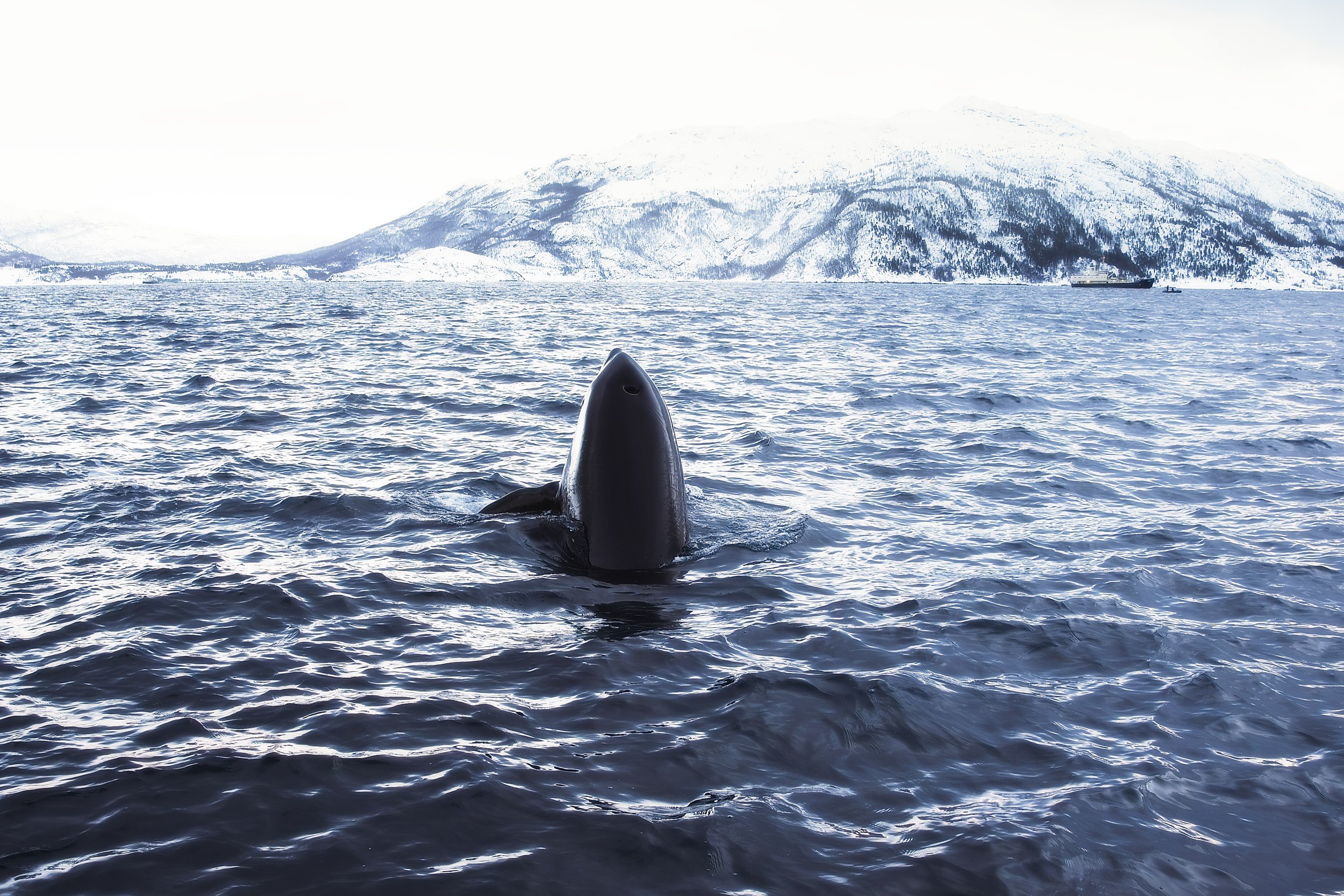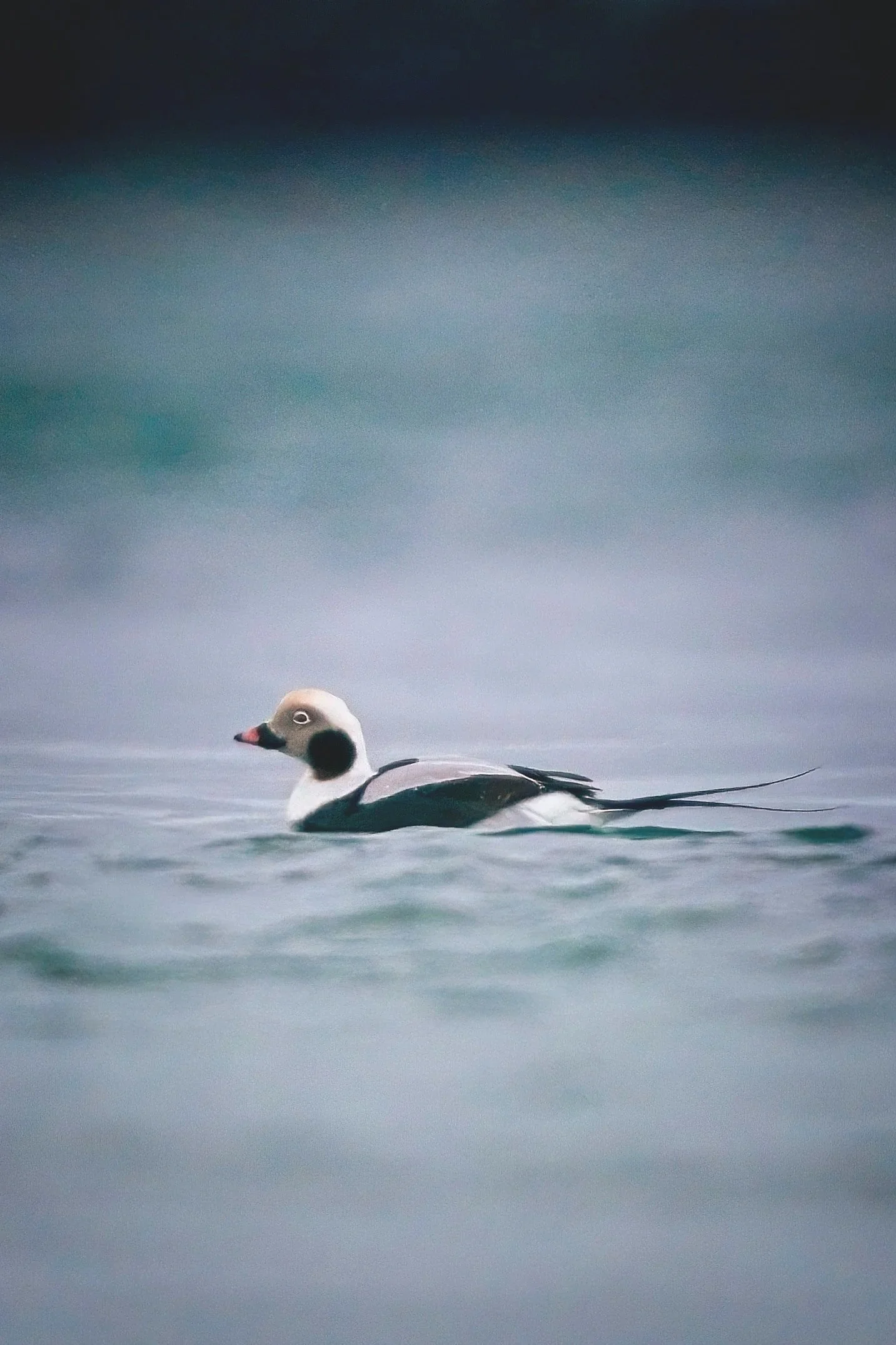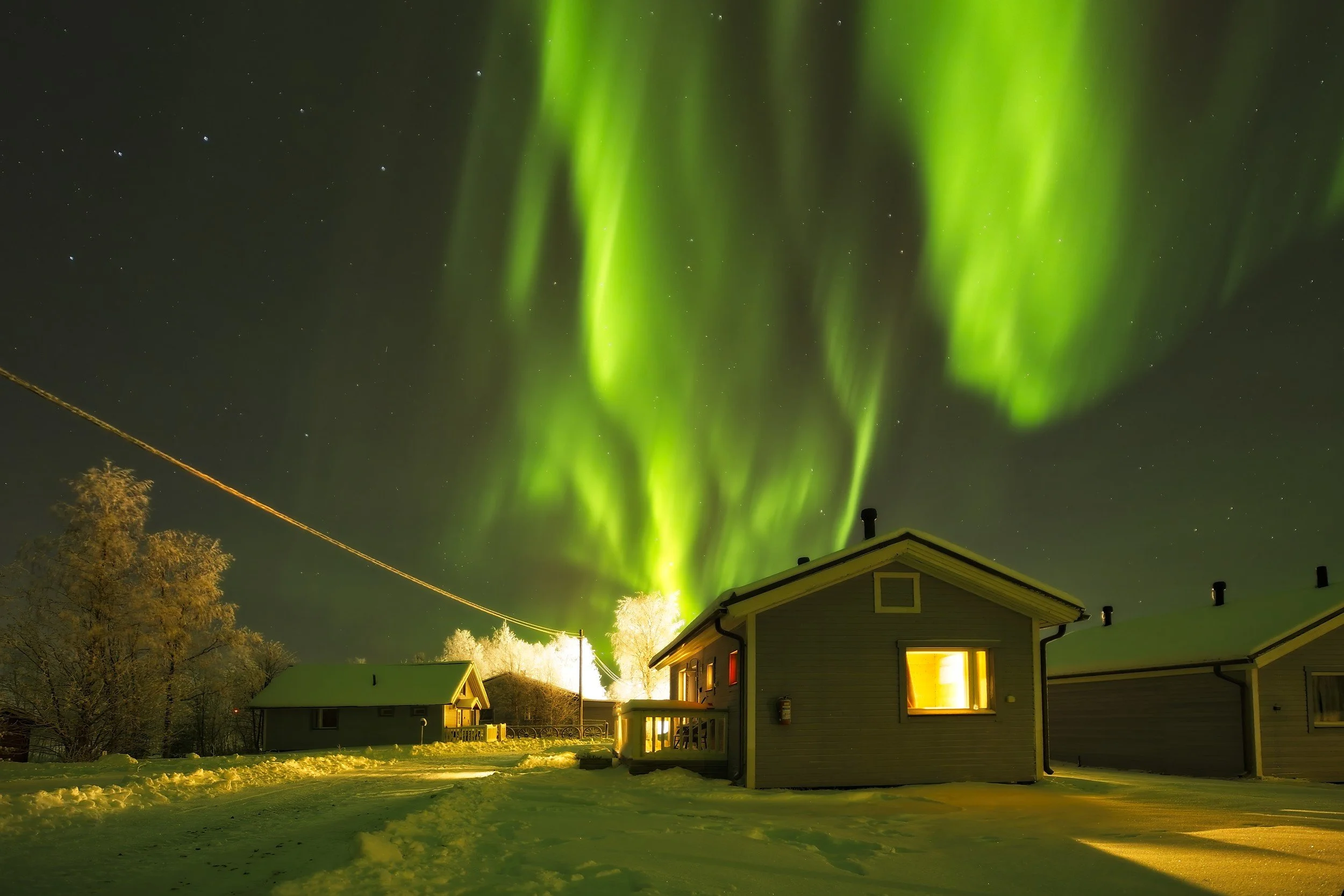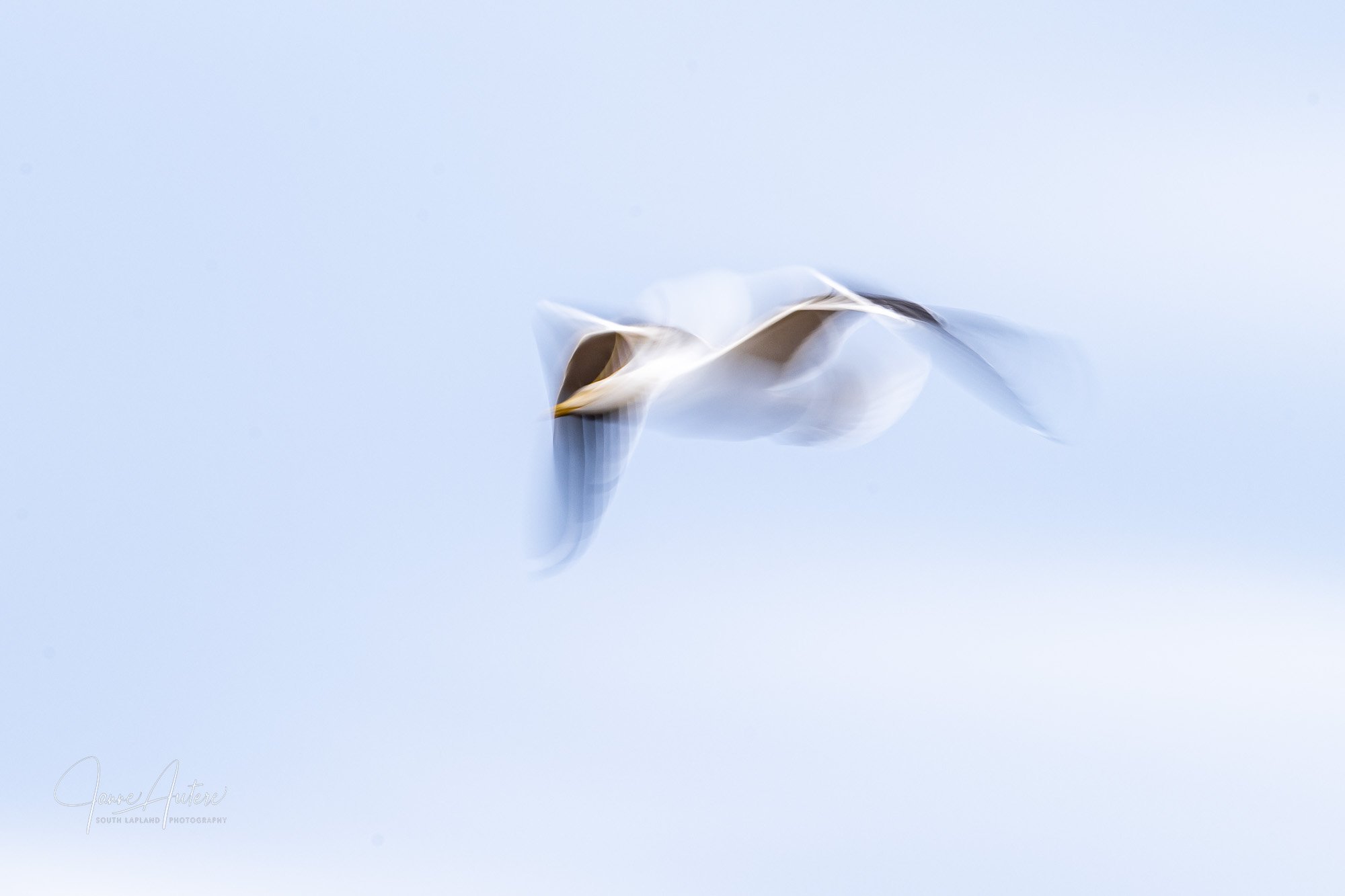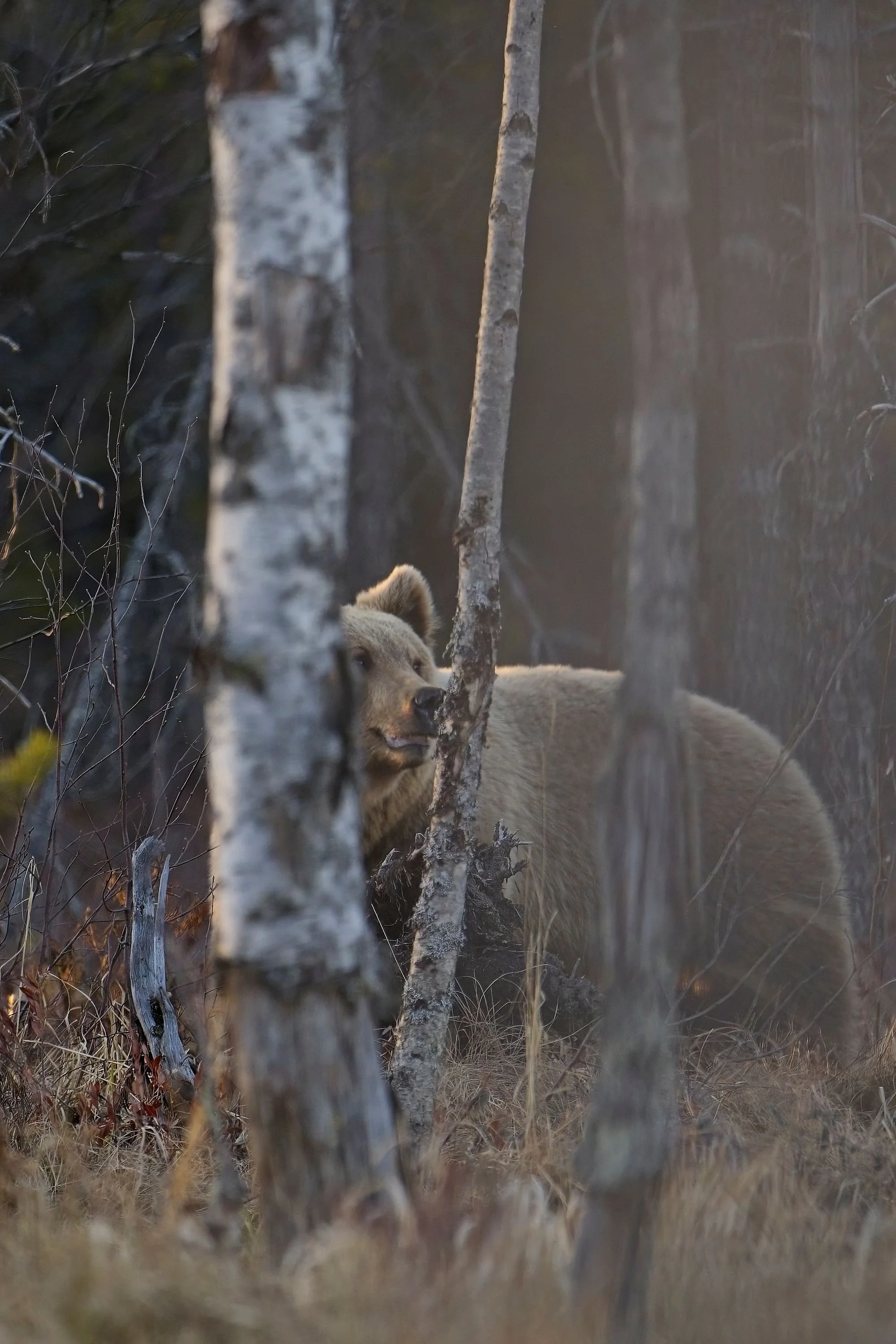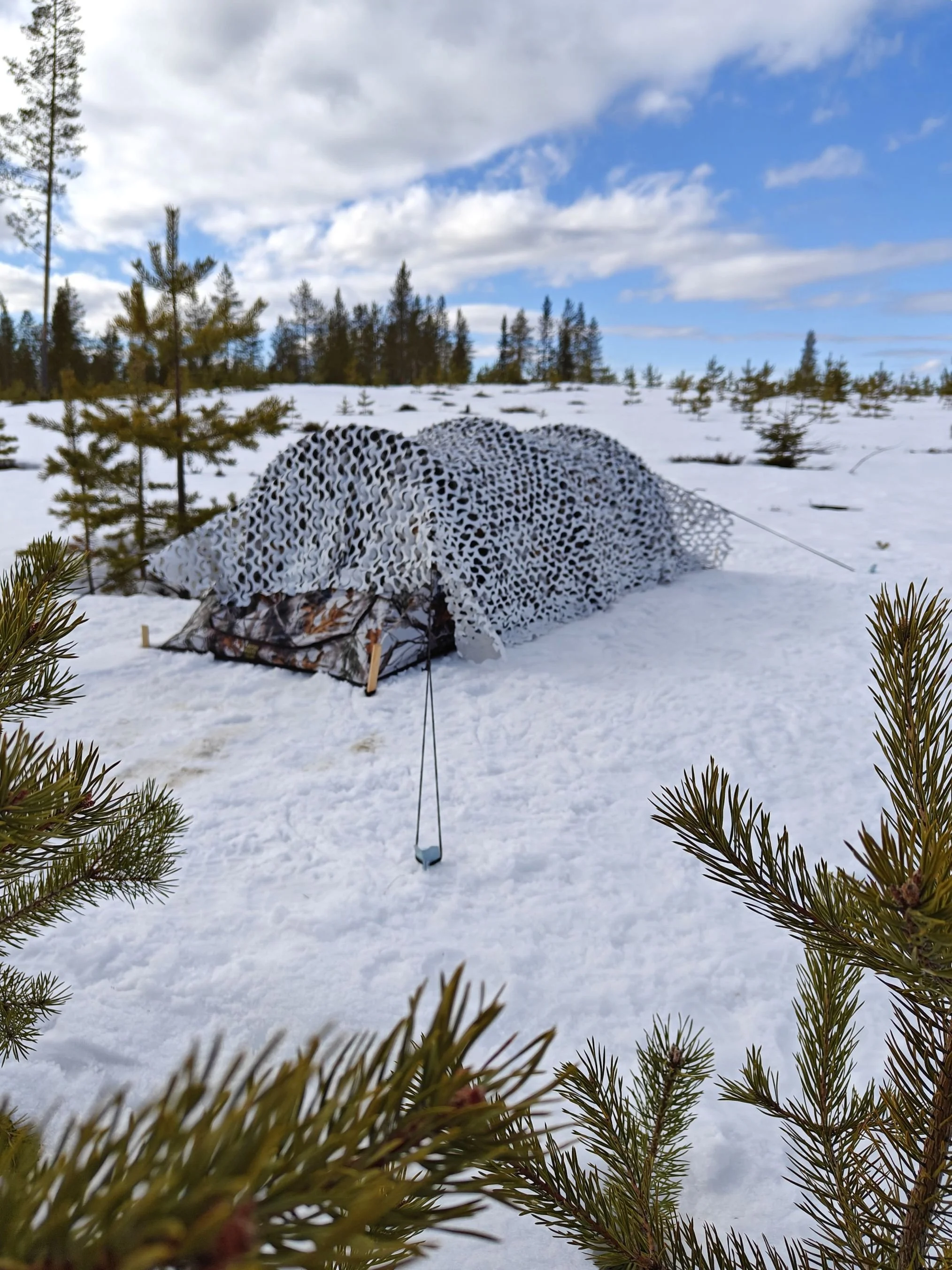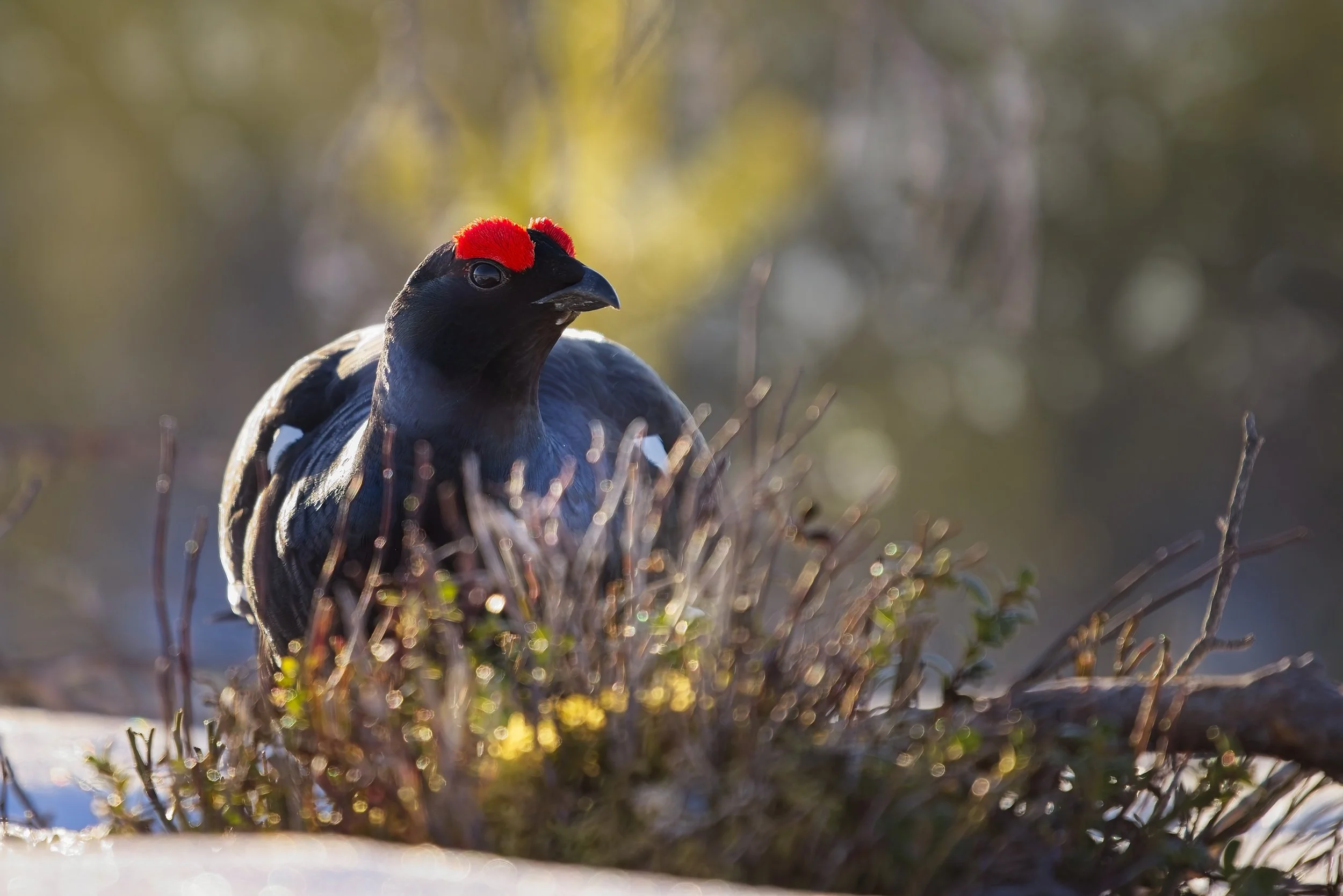
Welcome to our blog, where we share insights into our unique approach to travel and photography. Here, we introduce breathtaking destinations and capture the beauty of nature through images that tell meaningful stories.
Whether you're looking for inspiration, travel tips, or simply stunning photography, our blog is your gateway to the wonders of the world around us.
Join the Wild Escape from the North - Wildlife, Culture & Landscape Photography trip in Italy
Delta del Po is one of Europe’s most important bird photography destinations because of its extraordinary biodiversity and role as a key migratory crossroads.
Join our trip in April 2026 to Delta of Po-river, Italy
From the wetlands of the Po Delta alive with migratory birds to the timeless beauty of Venice and Ravenna, this journey offers a rare chance to capture summer’s awakening in Italy.
“A gondolier gliding through Venice’s timeless canals” – on this journey you’ll capture iconic scenes and cultural moments alongside a professional photographer, gaining fresh inspiration and, if you wish, guidance to elevate your own photography to the next level.
A Week of Inspiring Photography
Seven days and eight nights filled with diverse subjects: wildlife, landscapes, and cultural gems, guided by a local expert who brings depth to both nature and history.
Over 300 bird species have been recorded here, including more than 150 nesting species and 180 wintering species, making it Italy’s most significant ornithological site and one of the most important in Europe.
Iconic species such as flamingos, herons, kingfishers, Caspian terns, and Montagu’s harriers can be observed and photographed in dramatic wetland settings.
Interested in joining this trip?
Reach out right away via nordicwildscape.fi contact us -page to secure your place. We will send you more information about the dates, price, and schedule by email. For this journey, we welcome only a small group of enthusiastic photographers, ensuring a personal and inspiring experience.
Throughout this week we will create a storytelling photography journey – a visual narrative shaped by the places, wildlife, and culture we encounter. Together with the guide, you can decide which theme you want to explore, giving your images a personal direction and unique voice.
The vast, open landscapes and changing light of dawn and dusk provide ideal conditions for wildlife and landscape photography, combining natural spectacle with artistic opportunity.
We will also enjoy a full-day excursion to a nearby, easily accessible mountain region, where photography will focus on breathtaking medieval village landscapes, cascading waterfalls, and rolling mountain scenery.
During the week we will also immerse ourselves in Italy’s rich culture while staying in a cozy, family-run hotel in a small town within the Po Delta region. From here, it’s just a short walk to excellent photography locations – both the wetlands alive with birdlife, wildlife, and the charming cultural landscapes.
A majestic deer hiding behind the bush in the Po Delta – a serene encounter in Italy’s awakening summer landscapes.
Comacchio, the ‘Little Venice,’ where we stay, is a charming town of canals: friendly and authentic, with a vitality that springs from deep respect for its own history and the surrounding nature.
The day trip to Venice will be an unforgettable highlight of our journey.
With its iconic canals, gondolas, and timeless architecture, Venice offers endless opportunities for unique photography – from vibrant street life and reflections on the water to hidden corners full of history and atmosphere. Experiencing this magical city with a professional photographer means you’ll not only capture world‑famous sights but also discover fresh perspectives and creative ideas to enrich your visual storytelling.
Coastal beauty at the Po Delta – a lighthouse watching over wetlands and endless horizons.
Joining this photography trip means experiencing Italy’s summer awakening with expert guidance, diverse subjects, and inspiring locations.
You’ll capture wildlife, landscapes, and culture in the best light, gain new creative ideas, and enjoy the comfort of a cozy family hotel close to prime shooting spots. It’s an affordable opportunity to enrich your portfolio and create unforgettable visual stories.
A medieval bridge in a morning light.
A Week in Northern Norway: Guiding Austrian Nature Photographers
A reindeer photography moment during our road-trip.
Setting Off from Tromsø
Our journey began in Tromsø, the lively university city of Northern Norway. On the day of our arrival, fresh snow fell in abundance, covering the beaches, streets and mountains in a pristine white. For our Austrian guests, this snowy landscape was both breathtaking and rare—after all, Austria’s winters have grown increasingly unpredictable due to climate change.
In the beginning of our journey, it was heavy snowing all the way from Tromsö to Båtsfjord in Northern Norway.
Crossing Fjords to Reach Reisafjord
From Tromsø, we traveled toward Reisafjord, crossing two fjords by ferry. These crossings added a sense of adventure and variety to the start of our trip. Upon arrival, we were warmly welcomed by the staff of a traditional, idyllic hotel. After a long day, a delicious dinner featuring local flavors was exactly what we needed.
On this tour I tried to eat only vegetarian food - and I got it nearly in every place we accommodated! Sometimes a classic food delicacies must be tasted as in this photo - Torske tunger, cod tongues with boiled potatoes. Very good, fresh and and local!
Giants of the Sea in Skjervøy
The following mornings took us to Skjervøy, where we witnessed one of nature’s most spectacular performances: humpback whales and orcas hunting herring in the fjords. Watching these giants of the sea work together was unforgettable. Orcas, much like wolves, hunt in groups—an intelligent, cooperative behavior that requires learning and social skills. Sadly, industrial fishing vessels were also present, hauling thousands of tons of herring and other fish, most of which end up as animal feed rather than human food.
On a boat trip to fjord where the orcas and humpbacks are gathered!
First sightings with orcas were stunning! I was deeply touched to see how beautifully they were swimming together and sometimes coming up for spy hops!
This was just amazing moment how orca just came to see what is going on around!
Humpback whales are the real giants of the sea! Whoaaa!!!
We heard that male killer whales have a tall, straight dorsal fin with the tip directed upward, whereas females have a more backward-curving fin.
Familiar Grounds in Varanger
As the week continued, we headed north to the Varanger Peninsula. Having spent many photography sessions in the region before, I felt at home guiding our group in Båtsfjord. Knowing local entrepreneurs made it easy to showcase the best of the area. The weather, as often in Northern Norway, reshaped our plans slightly, but we still managed to complete all scheduled activities.
It just continued snowing in Varanger, but still, we enjoyed every moment!
Encounter with the Long-Tailed Duck
One highlight was photographing long-tailed ducks in the harbor. Swimming gracefully between fishing boats, they appeared in beautiful light conditions. For this session, I used the classic Nikon DII f4 600mm lens paired with a Nikon D7200. Though heavy, the combination allowed me to capture intimate and striking images of the birds, enhanced by the harbor’s artificial lighting.
A dream come true – I finally saw a long-tailed duck! Even in the dim light and grey surroundings, it was wonderful encounter.
Into Finnish Lapland: Aurora Finale
Our journey concluded in Finnish Lapland, where we experienced a thrilling husky safari in -25°C temperatures. As if to crown the adventure, the northern lights danced across the sky, painting vivid colors above us. It was the perfect finale to a week filled with wildlife, landscapes, and unforgettable encounters.
In Finnish Lapland we were lucky to see the most stunning Northern Lights show as a crown for our wonderful arctic Orcas & Auroras Tour!
A Journey to Remember
Guiding this Austrian photography group was a privilege. The blend of snowy landscapes, marine giants, rare bird encounters, and the magic of the aurora made this expedition truly memorable. It is a journey we will certainly repeat in the future. Thank you to Lifetravel Austria - it was an amazing trip with you!
With every wildlife expedition, including this one, we contribute part of the revenue to the conservation of Finland’s great carnivores.
The Art of Waiting: How Nature Photography Mirrors the Spirit of Adventure
A gull - long exposure photography
Embracing the Unknown
When I guide photography expeditions into the wild landscapes of Finland or Northern Europe, I often find myself returning to the mindset I developed while studying adventure education. At its core, both adventure and nature photography are about stepping into the unknown with curiosity, patience, and a willingness to adapt.
In the field, photography is rarely just about pressing the shutter at the right moment. It’s about surrendering to nature’s rhythm—waiting, observing, sometimes enduring long stretches of stillness or discomfort. And then, suddenly, everything changes. A beam of light breaks through the clouds. A wolf or a beautiful bird appears at the forest’s edge. The landscape transforms in a heartbeat.
A brown bear photographed from the solid photohide
The Journey Within the Journey
While our photography trips have clear destinations and goals, the real journey often unfolds in unexpected ways. Success isn’t always measured by the number of great photos taken, but by how deeply we engage with the moment—and how we respond to nature’s ever-shifting conditions.
We can influence some aspects: we use hides, we offer food to attract certain species, we study behavior and patterns. But ultimately, nature decides. And that’s what makes it so rewarding. The best images often come not from control, but from surrender.
A happy nature photographer with backcountry skis in Northern Finland
Patience as a Practice
Nature photography teaches us to wait. To be still. To accept that not everything is in our hands. Sometimes, a single powerful image takes days of effort. Other times, it arrives in a flash. Either way, the experience shapes us.
I’ve met many people on these trips who, like me, find joy in the process itself. The quiet hours. The anticipation. The deep focus that comes when you’re fully present in the landscape. It’s not unlike an expedition, where the reward at the end is unknown—but always worth the journey.
A river & mountain photo from our trip in Helgeland Norway
The Real Reward
Sometimes, the most unforgettable moments aren’t even about the photo. They’re about the encounter. The feeling. The story you carry home. And that, to me, is the true essence of nature photography: not just capturing beauty, but living it.
Mountain-top view from Norway
Inspire us, tell us your opinion, and win a new, sustainable t-shirt!
A village in Greenland
We’re excited to introduce our brand-new Nordic Wildscape t-shirts, responsibly made with sustainability in mind. These shirts aren’t just stylish and comfortable—they also reflect our commitment to ethical practices. And the best part? We’re giving them away as prizes in competitions that invite our readers to participate and share their ideas.
Where Would You Like to Go on a Photography Tour?
We’re kicking things off with a question for our followers: Where would you love to go on a nature photography adventure?
At Nordic Wildscape, we believe that the best journeys are shaped together. That’s why we want both current and future customers to help influence the experiences we offer. Your ideas matter—and they might just become part of our upcoming tour plans.
Listening to People—and to Nature
Our tours aren’t just built on maps—they’re built on voices. We listen to our community, and we listen to nature. We’ve partnered with a Finnish nature conservation organization and donate a portion of the proceeds from every completed tour to support environmental protection and wildlife. We want to set an example—not only for our guests but also for other companies and organizations that operate in nature. Photography, nature tours, and conservation can go hand in hand.
Join the Competition and Win a T-Shirt!
Want to win one of our new Nordic Wildscape t-shirts?
Visit our contact page by October 31, 2025, and tell us where you’d like to go on a nature photography tour! Submit your idea with enough detail to help us improve our services—and you might just be one of our lucky winners!
A Silent Encounter: Beaver and the Magic of the Finnish Wild
Mid-May in Kuhmo, near the Russian border, the wilderness is awakening. The river winds between forested hills, threading through dense woods and soggy marshes before releasing its waters into a lake. At the delta, a hardworking beaver couple is busy repairing dams and renovating their lodge—preparing for the arrival of their kits. Their work is more than instinct; it’s ecological engineering, creating wetlands that support countless species.
Ducks in a small river delta
As a nature photographer and guide, I’m always scouting new locations and subjects. While commercial hides offer convenience, the real magic lies in discovering fresh perspectives. This time, I’m accompanied by my husky, Pena, whose nose is already tuned to the scent of beaver.
We follow tracks from the river into the forest, where the beaver has been gathering timber. The lodge, built from logs and branches, stands out in elegant gray against the dark green forest. I hear the gentle splash of water—then a sharp crack under my boot. The beaver slaps its tail on the surface, warning its mate of intruders. I retreat quietly, marking a promising bend in the river for tomorrow’s shoot.
Into the Hide: Waiting for the Moment
The next evening, I return with my camera and a piece of camouflage netting. No photo tent this time—just patience and silence. I settle beneath a tree on the river’s outer curve, camera ready, senses alert.
A teal glides through the golden-lit grasses. I capture a few shots, then wait. An hour passes. Suddenly, a beaver swims silently past—so close I almost miss it. I fire the shutter, but it’s gone in seconds, disappearing around the bend.
A beaver swimming by quietly
Movement in the forest
A light brown figure emerges between the trees, moving slowly toward me. A bear.
My heart started pounding - a bear.
My heart skips. Bear sniffs the air, turns its head, and walks forward. I raise my camera, thankful for the silent shutter. I shoot carefully, aware of every breath and heartbeat. The bear is graceful, likely a female. Cubs might be nearby—perhaps even behind me.
She approaches the beaver’s dam, sniffs, and seems ready to swim. I decide to reveal myself. As I stand, she bolts into the trees. I feel a pang of guilt. I want to say: “It’s okay. I mean no harm.”
I pack my gear. As I walk away, she watches. I turn and take one last photo—her eyes meeting mine through the trees. That moment will stay with me forever.
This is the moment I never forget.
Reflections from the Wild
Encounters like this remind me why I do what I do. Nature doesn’t perform on command. It reveals itself in fleeting moments—if you’re quiet enough, patient enough, and lucky enough to be there.
Whether it’s a beaver slapping its tail or a bear stepping into view, these are the stories I live for. And they’re the ones I love to share—with you.
Into the Heart of Korouoma - The Ancient Canyon in Lapland
Lapland Cornel in Korouoma, Posio
There’s something magical about stepping into nature with a camera in hand and no rush in your heart. This past weekend, our group embarked on a serene day trip to the breathtaking Korouoma Canyon in Posio, Finland—a place where silence speaks and the forest listens.
Hiking Through Ancient Landscapes
People hiking on the bridge
We walked a few kilometers along the marked trails that wind through the canyon, each step revealing new textures, colors, and compositions. The path led us through herb-rich groves, past moss-covered rocks, and under towering cliffs that whisper stories from millions of years ago.
Beard moss on the tree - sign of the clean air
The Story Behind the Canyon
Korouoma is part of a bedrock fracture zone formed hundreds of millions of years ago. Over time, erosion carved out this dramatic gorge, now stretching 30 kilometers long and plunging up to 130 meters deep. Its geological history is etched into every cliff face and streambed.
Nature’s Rich Tapestry
Birch leaves and rocks
The canyon’s unique microclimate nurtures a rich variety of plant life. In the northern parts, calcareous soil supports lush vegetation, while pine forests dominate the drier southern slopes. Along the riverbanks, flood meadows bloom with wildflowers, and in late summer, the forest floor is dotted with ripe blueberries and mushrooms—nature’s harvest festival.
Bilberries (blueberries) with bokeh behind
A Moment With Like-minded
We paused at a scenic campfire site, where the scent of smoke mingled with the earthy aroma of the forest. Sharing a moment with other photographers outdoors, surrounded by the quiet grandeur of the canyon, reminded us how grounding it is to be present simply. It’s a wonderful feeling to be present, outdoors, and immersed in a beloved hobby—especially when surrounded by like-minded people who share the same passion and are eager to exchange experiences with you. But there is always time and space to be by yourself.
A lady with the camera
Capturing the Essence of Wilderness
Then came the heart of our journey: photography. We focused on capturing the essence of Korouoma’s untouched beauty—the way light filters through the trees, the intricate patterns of lichen on tree or stone, and the gentle ripple of clear streams.
An old tree stump and new life on it
The Golden Season for Photography
Late summer and early autumn are truly a golden time for photographers. The forest begins to blush with color, and the afternoon light grows softer, more poetic. In northern regions, this visual feast lasts for weeks, offering endless inspiration.
Bracket fungus towards the wonderful color of the Koro-River
Your Turn to Explore
If you’re reading this and wondering whether to head out with your camera—do it. Go into the woods. Get close to the ground. Step back for perspective. Seek out the quiet elegance of every plant, every shadow, every glimmer of light. Nature rewards those who look with intention—wishing you beautiful days of photography and peaceful moments in the wild!
Oyster mushroom - delicious mushroom grows on the old birch
The Untamed Storytellers: Photographing Finnish Predators in Their Element
A wolf and a brown bear in Finnish forest landscape
Rediscovering the Power of Context in Wildlife Photography
In today’s digital age, wildlife photography often leans into aesthetic perfection—blurred backgrounds and isolated subjects dominate the social media landscape. While these styles have their place, I find myself increasingly drawn to classic nature photography where the environment is not hidden, but celebrated. There’s something profoundly captivating about seeing Finnish predators such as wolves, bears, or wolverines in their authentic surroundings—immersed in the textures, colors, and contours of the wild North.
Backgrounds That Build Narrative
A clear and detailed background offers more than context—it becomes part of the story. Forest silhouettes, frost-laced undergrowth, or the golden dusk filtering through pines tell us something vital: these creatures are not props, but protagonists of a rich and fragile ecosystem. On our tours and workshops at Nordic Wildscape, we emphasize storytelling through photography. We encourage participants to capture not just an image, but a moment that evokes connection and meaning. The environment, when photographed intentionally, elevates the visual narrative in powerful ways.
A brown bear in the morning mist
Predators Under Pressure: A Call to Awareness
But the beauty we portray is in danger.
Predators play a vital role in maintaining ecological balance. Yet, across the globe, biodiversity is under immense threat. Habitat loss, climate change, and expanding human development have accelerated the decline of countless species. The intricate web of life—woven over millennia—is fraying. Apex predators, often misunderstood and vilified, are among the first to suffer.
A brown bear is eating a reindeer carcasse
Biodiversity in Decline: What’s Happening?
According to global conservation studies, Earth’s biodiversity is shrinking at an alarming rate. Scientists estimate that one million animal and plant species now face extinction, many within decades. Habitat destruction, pollution, and unsustainable resource use are eroding the diversity that underpins ecosystem resilience. When top predators vanish, entire food chains destabilize, affecting everything from vegetation to prey populations—and ultimately, human wellbeing.
Photography With Purpose: Telling Stories That Matter
That’s why our work as nature photographers matters. By sharing compelling images and stories, we help raise awareness and respect for wildlife. And when we present these photographs on platforms in social media, let’s choose to do so with purpose—highlighting not only the creature but the world it belongs to.
A brown bear on the swamp in Finland at the golden hour
Support Through Photography: Join the Conservation Effort
🌿 Did you know that by joining one of our Nordic Wildscape tours, you're actively supporting nature conservation? We donate a portion of all profits from our photography trips to protect Nordic wildlife through a trusted Finnish Nature Rights -organization (Suomen Eläinoikeusjuristit). Every trip you take, contributes directly to safeguarding the habitats and lives of the animals we cherish and photograph.
Brown bear showing the tongue and telling us that now it is time to act!
So come along and be part of a meaningful journey—where each photo you take helps tell an important story of the Nordic wilderness.
Black Grouse Lekking – A Nordic Dance Captured Through the Lens
Black Grouse lekking photography is fantastic and affordable way to experience the wildlife in Northern Finland. Ask more and rent a hide from Nordic Wildscape!
Nordic Wildscape offers affordable photography sessions during early Spring and in Autumn near Syöte National Park.
As spring breaks over Syöte’s snowy ridges and autumn cloaks the forest in amber stillness, the lekking of black grouse becomes an electrifying spectacle. On quiet forest openings, the males gather to strut, hiss, and bubble in hopes of attracting a mate – not just a mating ritual, but a drama of sound and movement played against the rising sun.
Black Grouse photography tent hides offer affordable way for bird photography in Syöte area, near the Syöte National Park in Northern Finland.
From a camouflaged tent you have a view from inside the tent around you to straight ahead and to both sides.
You should join us with your camera precisely when the lek reaches its peak intensity. These sessions are conducted in one-person, low-angle, tent hides, offering quiet solitude and a focused space to capture the moment. From the shelter of the hide, photographers witness this primal ballet in golden morning light. The crisp air and quiet anticipation give way to flapping wings and fierce displays.
A Black Grouse male behind the small bush near Syöte National Park in Pudasjärvi, Finland.
Spring offers vibrant action and cinematic silhouettes, while the autumn lek provides calm, contemplative energy – both seasons delivering distinctive tones and moods for the discerning photographer. Whether you’re a seasoned wildlife shooter or a newcomer seeking natural beauty, this encounter will stay etched in your memory—and in your photos.
A Black Grouse male portrait.
Photographing black grouse at the lek is more than capturing a bird. It’s about slowing down, waiting patiently, and letting nature write its story right before your lens. Join us and step into one of the Nordic wild’s most iconic scenes. Ask more from the contact page and get the price and instructions.
Black Grouse male is a great, interesting bird! We are happy to give you the opportunity to photograph them in Syöte area in Pudasjärvi.
Remember our Log Cabin in Syöte
Taigalampi Cabin – Your Cozy Hideaway in Syöte
Nestled on the edge of a tranquil forest pond near Syöte National Park, Taigalampi Cabin offers a peaceful retreat for nature lovers and photographers alike. Surrounded by taiga forest and the quiet rhythms of northern nature, the cabin features comfortable amenities, modern touches, and an authentic wilderness atmosphere—perfect for recharging between photography sessions.
Whether you’re here to capture the magic of black grouse lekking or explore the boreal landscapes and the magical Northern Lights, Taigalampi is your base for immersion and inspiration. Read more and book https://taigavire.fi/en_US/accommodation-in-syote/taigalampi-cabin
Welcome to our Taigalampi Cabin in Syöte, Pudasjärvi, Northern Finland.
Hornøya: A Symphony of Wings at the Edge of Norway
Nestled in the far northeastern reaches of Norway lies a real treasure for birdwatchers and nature photographers alike—Hornøya Island. Our recent photography expedition to the Varanger Peninsula offered one of the most captivating wildlife experiences I’ve ever had, and I wholeheartedly recommend it to anyone with a passion for seabirds and Nordic beauty.
Razorbill on it’s own throne in Hornøya Island
The Journey Begins in Vardø
We set off from the quaint harbor of Vardø aboard a sturdy rib boat, slicing through gentle summer waters on a 15-minute ride toward Hornøya. The weather smiled on us—calm seas and golden skies, the kind of Arctic summer day that feels like nature's private invitation.
A short boat trip to Hornøya begins from the harbor.
Welcome to Bird Paradise
Stepping onto Hornøya is a full-sensory immersion. You're greeted not just by the calls of tens of thousands of seabirds but by the salty tang of the sea and the earthy scent of guano—a signature perfume of any true seabird haven :)
Welcome to the Island! The birds, cormorants and black guillemots appear unbothered by human presence on the island.
The trail across the island loops around the northern side, passing under dramatic cliffs that eventually lead to the Vardø Lighthouse, perched 65 meters above sea level on the island’s highest point. From there, the panorama is unforgettable: rocky shores, wide skies, and feathered silhouettes in constant motion.
Birdlife Beyond Imagination!
Hornøya and the Vardø area are home to an astonishing array of species.
Among the stars are:
- Cormorants (Great & European Shag)
Cormorant landing in early spring weather conditions
- Razorbills and Puffins, charismatic icons of the north
Atlantic Puffin has something to say to me!
- Guillemots (Black-legged and Brünnich's)
Common & Brünnich’s Guillemots
- King Eiders and Steller’s Eiders
- Common Eiders, Long-tailed Ducks
Common eider in flight
- Great Black-backed, Glaucous, and Herring Gulls
- Black-legged Kittiwakes and Purple Sandpipers
Black-legged kittiwake looking to the sea. The best place for kittiwakes is the island of Ekkerøy, which belongs our tour’s must visit - places in Varanger.
- Occasionally, even a Grey Seal might grace the shoreline with a curious glance
These birds, habituated to human presence, allowed us incredible photo opportunities—from intimate close-ups to dramatic flight shots against the wall, sea and sky.
Sunset, Silence, and Shots
For those craving blue or golden-hour magic, there's even the chance to stay overnight in the lighthouse keeper’s cottage near the summit. Watching the Arctic sun dip low on the horizon while thousands of birds settle in around you—it’s the kind of moment that imprints itself on your soul.
Razorbill in sunset light in Varanger
If this taste of Hornøya has you dreaming of windswept islands and chattering seabird colonies, our future expeditions await. Bring your lenses, your curiosity, and a love for the wild.
Chasing the Arctic Fox: First Days on our Midnight Sun -trip
White-tailed Eagles on the Barents Sea coast in Varanger Peninsula.
Into the North: Setting Off from South Lapland
A warm departure and the call of the Arctic beyond the horizon.
Our recent expedition with a small group to Norway’s far northeast was nothing short of magical—a blend of discovery, wildlife, and Nordic charm. Departing from Finnish Lapland in the gentle warmth of 18°C, we set our sights northward toward the dramatic fjords of Varanger.
Roadside Charms and First Encounters
Café stops, Lappish delights—and a surprise sighting in the treetop!
We made leisurely stops along the way, stretching our legs and savoring Lappish delicacies in cozy roadside cafés. Just before reaching Sodankylä, we were greeted by our energetic companion, Pena the husky, for a refreshing walk along a hidden nature trail. That stroll delivered our first wild surprise—atop a tall Arctic pine, a majestic Northern Hawk Owl watched us from its lofty perch.
Pena-Husky in Lapland, on a nature trail, somewhere near Sodankylä town.
Fjordside Hospitality in Vestre Jakobselv
Warm meals and a Northern welcome in a tucked-away fishing village.
In Sodankylä, we stayed the night in a delightful local cabin that wrapped us in its rustic tranquility. Morning brought new excitement as we continued toward the Varangerfjord and the charming fishing village of Vestre Jakobselv. There, we enjoyed a hearty meal and settled into our welcoming accommodations, ready for our next big moment: the chance to spot the elusive Arctic fox!
The Arctic Fox Appears
A thrilling and rare moment of wildlife connection.
And fate smiled on us. No sooner had we reached the potential viewing site than an Arctic fox appeared—close and curious. Though its visit was brief, it was enough to ignite our spirits. Dressed in camouflage and full of anticipation, we quietly waited for another glimpse. By this point in the evening, the temperature had dropped to around 7°C, and a brisk southeasterly wind made the weather feel quite chilly.
While the fox didn’t return, the tundra revealed its rich life. We observed species iconic to this region—the elegant long-tailed skua, the commanding white-tailed eagle, and flocks of sea birds along the Barents Sea coast.
A long-tailed skua on the hunt.
Arctic Fox in Tundra - maybe you get a bit closer on our next trip?!
Wonderful but short meeting - bye! See you next time!
Beautiful flock of Common Merganser on the Barents Sea.
Memory Cards Full, Spirits High
A fulfilling day of sightings, stories, and wild snapshots.
Hours melted away as our cameras clicked and memories were made. Our memory cards filled quickly with stunning portraits of northern wildlife—and that single, lucky capture of the Arctic fox, a dream for any nature photographer.
A Photographer looking for a target species in Varanger Peninsula.
As the day drew to a close, we returned to our lodge—grateful, exhilarated, and already dreaming about our next Arctic escape. And the next day, early in the morning, we had a wonderful meeting with a red fox near our accommodation!
Where Nature Tells My Story: Meet Janne with Pena-husky on Tour!
Janne, owner, photographer, entrepreneur & Pena - husky
Meet Janne
Hello, my name is Janne. I’m a qualified professional photographer, adventure guide, and tourism professional (BBA in Hospitality Management). I’ve dedicated my adult life to capturing the wonders of the natural world – and I truly believe in its power to inspire, restore, and reconnect.
With years of experience leading groups in the wild, safety is always my top priority. Before this path, I trained and worked as a professional chef, so I love creating hearty, nourishing meals for our tours.
Sustainability is at the heart of everything we do. Nordic Wildscape proudly holds the Good Travel Seal certification and is part of Visit Finland’s Sustainable Travel Finland (STF) program.
Me and my dog, we are on photography tour in Lyngen area in Norway.
Photography is at its best when it’s a shared experience. I’ve spent years immersed in the art of capturing wild nature – but what brings me even more joy is helping others discover their own creative voice. On our tours, I guide you technically, but more importantly, I encourage you to slow down, observe deeply, and tell your unique story through images.
Hiking to the mountains :) It was a wonderful day with Pena and the great landscape photography!
Whether you're just starting out or refining your skills, I’ll meet you where you are – with practical tips, constructive feedback, and real presence in the field. Every journey is a chance to grow, and I’m here to support that growth.
Hikers in Lyngen Alps.
The Power of Storytelling Photography: Creating Meaningful Visual Narratives
Geese flying on the sea in the Northern Norway
Our tours and services for photographers
For those seeking guidance or wishing to maximize their wildlife or landscape photography experience, Nordic Wildscape offers a range of photography tours and services. In Southern Lapland, Eastern Finland, Northern Norway, or other Scandinavian countries, through our cooperation with local tourism operators and specialists, we offer comprehensive photo tours that cater to beginners, amateurs, and professional photographers. These tours provide not only access to prime locations but also the expertise of seasoned guides who understand the behaviours and patterns of the local nature.
Guided tours are an excellent way to ensure ethical wildlife photography, as guides help navigate the terrain responsibly, ensuring minimal disturbance to the animals. The tours often include hide photography, where photographers can capture intimate portraits of wildlife from concealed locations, allowing for authentic and undisturbed images.
Sometimes the hide photography is the safest, easiest and most comfortable way to capture the wildlife.
Storytelling Photography
Storytelling photography goes beyond capturing isolated moments—it weaves images into a compelling narrative that evokes emotions, conveys messages, and connects with viewers on a deeper level. Rather than focusing solely on aesthetics, this approach prioritizes the story behind the image, allowing photographers to craft visual experiences that resonate.
For photographers, storytelling photography enhances creativity and purpose. It encourages intentional composition, thoughtful framing, and an understanding of the subject’s context, leading to more meaningful and impactful work. It also improves communication skills, as photographers must think about how their images convey emotions and narratives without words.
For those who see the difference
For audiences, storytelling photography fosters engagement and emotional connection. A well-crafted photographic story can inspire, inform, and provoke thought, transporting viewers into the scene and helping them experience moments and perspectives they might never have encountered otherwise. In a world filled with fleeting images, storytelling photography ensures that photographs have lasting significance.
Lighthouse captured on the winter photography trip in Norway.
By mastering this approach, photographers elevate their work beyond simple documentation, creating images that truly move and inspire. I hope we meet on our trips on the Nordic Wildscape.
Choose your time: Optimal Seasons for Wildlife Photography
Timing is crucial when planning a landscape or wildlife photography expedition. Each season brings its charm and opportunities for capturing the natural world. Spring, with its vibrant hues and renewed life, offers a chance to photograph animals as they emerge from their winter slumber. Bears can often be seen with their cubs, and migrating birds return, filling the skies with new life.
A swan, Finnish national bird, swimming in the lake in May.
Summer provides long daylight hours, known as the Midnight Sun, allowing photographers to explore the best wildlife spots without the pressure of dwindling light. This season is perfect for capturing the lush greenery and the bustling activity of animals taking advantage of the warmer weather.
A night shot of the wolf male in the beginning of summer.
Autumn transforms the landscape into a tapestry of reds, oranges, and yellows, providing a stunning backdrop for wildlife photography. The rutting season for moose and deer offers unique behavioural photography opportunities.
Autumn covers the landscape to wonderful colors in South Lapland
Winter, while challenging, rewards the adventurous with ethereal scenes of snow-covered forests and the possibility of photographing wildlife against the stark, white landscape. The Northern Lights may also grace the night skies, adding a magical touch to any nature photographer's portfolio.
Northern lights hunting tour in South Lapland.
Dressing for Success: Essential Clothing for Bird & Landscape Photography in Winter
Venturing into the stunning wilderness of Finnish Lapland, Eastern Finland, or Varanger, Northern Norway, in winter, is an unforgettable experience, especially for bird photographers eager to capture Arctic species in their natural habitat. However, the harsh northern climate demands proper clothing to ensure both comfort and endurance while out in the field.
Layering is key: Start with a moisture-wicking base layer to keep dry, followed by an insulating mid-layer to retain warmth. A high-quality windproof and waterproof outer shell is essential to protect against unpredictable weather conditions, including snow, wind, and sudden temperature shifts. We recommend a white or snow-camo outer layer.
A photographer with a rucksack, several layers inside, and a winter camo outer shell on top.
Feet & hands
For footwear, opt for insulated, waterproof boots to keep your feet warm during long hours in snowy or damp terrain. Thermal socks and gaiters provide extra protection against cold and moisture.
Hands and head mustn’t be overlooked—wear thick gloves or combination of woolen or fleece gloves and a core mittens that allow for dexterity when handling camera equipment, and use a balaclava or insulated hat to prevent heat loss.
A well-prepared photographer with a right clothing for an arctic photo-trip.
Comfort and mobility are just as important as warmth. Choose clothing that allows easy movement, ensuring you can react quickly when that perfect shot presents itself. With the right gear, you’ll be well-prepared to capture the breathtaking beauty of Varanger’s birdlife while staying warm and focused.
Fuel for the Cold: The Importance of Food and Hydration in Winter Photography
A winter photography trip in Scandinavia is a breathtaking adventure, but freezing temperatures and long hours outdoors demand proper nourishment and hydration to keep energy levels high.
Cold weather increases calorie consumption as the body works harder to stay warm. Packing high-energy, nutrient-rich foods like nuts, dried fruit, protein bars, and warm meals ensures sustained energy throughout the day. Hot drinks, such as tea or coffee, help maintain warmth and comfort in the field. Normally, we carry the soup lunch with us in the soup thermos bottle. Hot soup and sandwiches during the day have been a hit during our trips!
Photographer capturing the Lapland landscape in very cold temperatures.
Staying hydrated is just as essential. Even in cold temperatures, dehydration can occur, impacting focus and endurance. Drinking enough water—preferably warm or insulated to prevent freezing—helps maintain circulation and concentration.
A well-fueled and hydrated photographer stays sharp, alert, and ready to capture the magic of winter landscapes and wildlife, making proper nutrition an essential part of any Arctic expedition.
Making Your Tour Comfortable: Essential Gear for Capturing Wildlife
Equipping yourself with the right gear is vital for a successful wildlife photography trip. A sturdy DSLR or mirrorless camera with a fast telephoto lens is recommended to capture the fast-paced action and the intricate details of the wildlife. A prime or zoom lens with a focal length of 300mm or more will allow you to photograph animals from a safe distance without disturbing them.
A bird photographer in Lapland with a 150 - 500 zoom lens.
Tripods or monopods are essential for stabilizing your camera, especially during low-light conditions or when using long lenses. Consider weather-resistant gear to protect your equipment from unpredictable weather conditions, particularly during the wetter seasons.
A tele-zoom lens with weather-resistant lens cover - and a great tit with it!
Photographer Lubos Houska
Investing in quality binoculars can enhance your wildlife-spotting abilities, helping you locate subjects before setting up your shot. Remember to pack extra batteries and memory cards, as the remote locations may not offer easy access to recharging facilities.
Binoculars are great add to your bucket list for a wildlife tour.
Spreading the good word: Conservation Efforts and Ethical Photography
Conservation is at the heart of our mission in Nordic Wildscape. Our company works diligently to protect the unique ecosystems of Northern territories, ensuring that the natural beauty that attracts wildlife photographers remains unspoiled for generations to come. As photographers, we have a responsibility to practice ethical photography, respecting the habitats and behaviours of the wildlife we capture through our lenses.
Nature photographer in the boat photographing the Saimaa ringed seal.
Adhering to ethical guidelines, such as maintaining a safe distance, avoiding nesting or den areas, and respecting the natural behaviours of animals, ensures that our presence does not negatively impact the ecosystem. By participating in guided tours, photographers can learn about and contribute to ongoing conservation efforts, supporting the local communities and the sustainability of the region.
We found it lying on the rock! It is nice to have a quiet electric boat for a photography trip.
For example, Saimaa Lakeland, Kuhmo and Suomussalmi in Finland and Northern Norwegian nature offer rich wildlife and cultural experiences, positioning themselves as tranquil alternatives to the bustling tourist spots in Lapland. Whether you're drawn by the promise of rare wildlife encounters, the allure of unspoiled landscapes, or the vibrant cultural heritage, these regions invite you to escape to nature and rediscover the essence of life in the heart of the area.
The Saimaa Ringed Seal (Pusa hispida saimensis) is one of the rarest seals in the world. Around 480 seals remain in Lake Saimaa, Finland. There is still plenty of work to be done to protect this species that remains on the verge of extinction.
Wildlife, Landscape and the Culture: Unique Experience in the North
The Unique Experience in the North
The Northern Territories, a hidden gem in the world, offer a remarkable setting for nature, wildlife, and landscape photographers. Nestled within the enchanting Lapland and Northern Scandinavia region, the northern areas boast an unparalleled biodiversity that draws photographers from around the globe. The tundra, taiga, sea coast, dense forests, serene lakes, and sprawling wetlands create a perfect habitat for various species. Here, nature photography enthusiasts can capture the majestic brown bear, the elusive wolf, hundreds of Arctic birds, reindeer, and the graceful moose, all set against the backdrop of pristine wilderness.
Wild brown bear photographed in Eastern Finland ©Janne Autere
The enchanting melody of birdsong fills the air, with species such as the golden eagle and the capercaillie making their homes in this lush landscape. The untouched terrain allows photographers to document the dance of nature in its purest form, where the cycle of life unfolds undisturbed. For example, Eastern Finland’s Kuhmo's unique ecosystem, complemented by the tranquillity of Suomussalmi, offers an experience that rivals the more popular Lapland but with fewer crowds and more intimate wildlife encounters.
Explaining the Northern Lights and photography
Understanding the Aurora Borealis
Often referred to as the Northern Lights, the Aurora Borealis is a mesmerising natural phenomenon gracing the northern hemisphere's night skies. This spectacle is caused by charged particles from the sun colliding with the Earth's atmosphere, resulting in a dance of lights across the sky. Capturing this celestial ballet requires more than just a good camera; it demands understanding the science behind the phenomenon, and this way, you can get the most beautiful captures of it!
Northern Lights, Aurora borealis in Syöte, South Lapland ©Janne Autere
The Aurora Borealis is most commonly seen in northern regions around the Arctic. However, its appearance is not guaranteed, as it depends on solar activity and bright sky conditions. This unpredictability is part of its charm and excitement, making each experience unique. For those interested in venturing out to capture its brilliance, understanding the optimal conditions and planning the photography session is essential.
Best locations for the Northern Lights
When it comes to Northern Lights photography, location is key. While Rovaniemi and Northern Lapland are popular destinations for Aurora enthusiasts, the regions of South Lapland offer equally enchanting experiences with a fraction of the crowd. Nestled within Pudasjärvi, Ranua, and Posio, these areas provide a serene backdrop of untouched wilderness and cultural heritage. For example, you can find many interesting Instagram feeds about the Aurora photography from these areas like: https://www.instagram.com/j.autere/
Bus stop under the Northern lights in South Lapland ©Janne Autere
During our nature and landscape photography tours and workshops it is more than usual that between the bird, whale or mammal photography in Northern territories you have great opportunities for capturing the Northern lights.
Pudasjärvi, Taivalkoski, Kuhmo, and Suomussalmi are ideal for those seeking tranquility and different kinds of photography opportunities. Here, the absence of light pollution enhances the visibility of the night sky, making it a perfect spot for capturing the Northern Lights. We, for example, offer Arctic Wolf & Auroras - an active photography tour where you can enjoy the auroras, stargazing, and wildlife on the same tour. Moreover, the regions boast vibrant cultural offerings, from traditional Finnish food to historical landmarks, adding depth to your travel experience.
By positioning the South Lapland or Kainuu area, as we call the Arctic Lakeland, as complementary destinations to Lapland, travellers are encouraged to explore these hidden gems in Eastern Finland, where they can enjoy the magic of the Aurora Borealis amidst a stunning natural backdrop.
Essential camera gear for capturing the Northern Lights
To embark on a successful Northern Lights photography adventure, having the right camera gear is crucial. A DSLR or mirrorless camera with manual settings capability is recommended, as these allow for greater control over exposure, ISO, and aperture. A wide-angle lens with a fast aperture (f/2.8 or lower) is ideal for capturing expansive sky scenes and maximizing light intake.
Investing in a high-quality tripod is non-negotiable, as stability is essential for the long exposure shots needed to capture the Aurora. Additionally, consider bringing extra batteries and memory cards, as cold temperatures can drain battery life, and you'll want ample storage for your night sky photography endeavours.
Camera, wide-angle objective, and a tripod on the night photography trip ©Janne Autere
A remote shutter release or a two-second delayed shutter release can also be beneficial, preventing camera shake during exposure and allowing for time-lapse sequences of the Aurora Borealis. You can control the two-second shutter release more easily than the five or ten-second delay. Ensuring your gear is well-equipped for the unique challenges of night photography will enhance your chances of capturing stunning images. We are ready to help you get your best pictures of the Northern lights.
Camera settings for Northern Lights photography
Choosing the best camera settings for Northern Lights photography is integral to capturing the phenomenon's vibrant colors and intricate details. Start by setting your camera to manual mode to have complete control over your settings. Set the ISO between 2500 and 3200, depending on the brightness of the Aurora and ambient light conditions. A higher ISO increases sensitivity to light, but be cautious of introducing noise.
Use a wide aperture (f/2.8 or lower) to allow maximum light through the lens, and set your shutter speed between 3 and 15 seconds. The optimal shutter speed will vary based on the intensity and movement of the Aurora; faster movement may require shorter exposures to avoid blurring the lights.
A lady under Auroras in Syöte Finland ©Janne Autere
Focus your lens manually to infinity, and use live view mode to fine-tune the focus on a bright star or distant light source. Experiment with different settings to find the perfect balance for your specific conditions, and remember to review your shots periodically to make necessary adjustments.
Techniques for capturing stunning Aurora photos
Beyond camera settings, several techniques can elevate your Aurora photography. Composition is key; include natural elements like trees, mountains, or lakes in the foreground to add depth and context to your images. These elements not only anchor the scene but also provide a sense of scale against the vastness of the sky.
Northern Lights reflects from the Lake in Finland ©Janne Autere
Experiment with various perspectives and angles to create dynamic compositions. Leading lines, such as a winding river or a road, can draw the viewer's eye towards the Aurora, making for a more interesting image. Be patient and ready to adapt because the Aurora's movement and intensity can change quite quickly.
Consider using a time-lapse technique to capture the Aurora's movement over time. This involves taking multiple exposures over a period and combining them into a short video, allowing you to showcase the dynamic dance of the lights uniquely.
Post-processing for Northern Lights images
Post-processing is an essential step in refining your Aurora Borealis images. By using software like On1 Photo Raw https://www.on1.com/products/photo-raw/ like I use, it is easy to adjust exposure, contrast, and colour balance. Enhancing these aspects can bring out the vivid hues and details of the Northern lights.
Be cautious not to over-process; maintaining the natural beauty of the Aurora should be the goal. Use noise-reduction, which is built, for example, inside the On1 Photo Raw, to minimize the noise introduced by high ISO settings, and consider adjusting the clarity and sharpness to enhance the overall image quality. The noise reduction also makes your photos sharper in any case.
Finally, crop and straighten your images to improve composition and remove any distractions from the frame. With thoughtful post-processing, your Northern Lights photos can transform from simple captures into stunning works of art that beautifully convey the magic of the Aurora Borealis.




